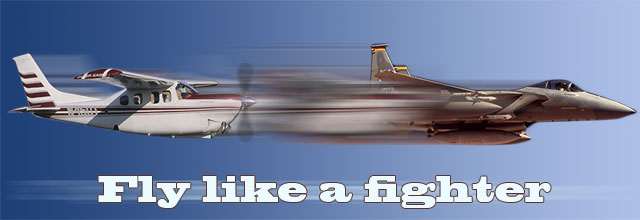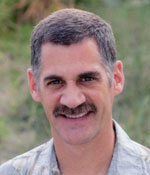
I got airsick on my first training flight as an Air Force student pilot in the T-37. And my second flight. And my third. I actually got sick on my first five flights. Getting carsick as a kid didn’t help the situation. Neither did the 90-plus degree heat of the summer along with the constant thermal turbulence. But mainly I was putting too much pressure on myself to be at the top of my class so I could get the F-15 I had been dreaming about. After I stopped worrying about my gradesheets and my eventual aircraft assignment, and relished the simple fun of flying, the airsickness stopped.
 This early experience shaped my actions when it came time for me to take individuals up for orientation rides in the F-15 and T-38. These people included a reporter, an air traffic controller, and numerous crew chiefs and Air Force Academy cadets. We pulled up to 9 Gs and did rolls and loops, and some of them even rode through some dogfights. None of them ever got sick. Yes, they get most of the credit, but I’d like to think that I did my part to help.
This early experience shaped my actions when it came time for me to take individuals up for orientation rides in the F-15 and T-38. These people included a reporter, an air traffic controller, and numerous crew chiefs and Air Force Academy cadets. We pulled up to 9 Gs and did rolls and loops, and some of them even rode through some dogfights. None of them ever got sick. Yes, they get most of the credit, but I’d like to think that I did my part to help.
Quite a few of them arrived in the briefing room with obvious apprehension, nerves, and anxiety. For all of them, I kept a smile on my face and assured them that our only goal for the day was for them to have fun. If they showed up on an empty stomach, I encouraged them to eat a small snack. I noticed that by simply briefing them line-by-line from our briefing guide that they gained confidence in my ability as their pilot, but also they began to understand what we would be doing during the flight. This was the biggest anxiety reducer as it addressed the fear of the unknown. Finally, rather than just making them a passenger, I briefed them on some crew tasks I would use them for—mainly a few cockpit checks and clearing for traffic. Continuing with the positive attitude in flight, they all did great.
During a break from flying the F-15, I got checked out at the local FBO and eagerly took someone up for a sightseeing flight in a Cessna 172. I didn’t think the straight-and-level flying was keeping their interest, so I introduced some stalls to them. Big mistake! My sense of fun was way off the scale compared to their sense of fun. I soon realized that to most people, getting in a small aluminum tube and climbing above the ground is excitement enough, even terrifying to some. I have a friend who has flown with me a few times and recently admitted on our last flight, “Oh I love to fly, I just don’t like to turn!”
To share our flying passion with our passenger friends, we need to be thoughtful about how we fly, where we fly, and how we prepare them to have a good experience. For flight instructors, I highly encourage you to make the first two flights with your new student a simple cross-country for a $100 hamburger. No stalls. No touch and goes. Show them what prize their pilot ticket will gain them.
The more we can get student pilots and passengers to fly, the more we can help ensure the longevity of general aviation. Share the fun!
Larry Brown of Colorado Springs, Colorado, is a retired Air Force F-15 pilot who is using the lessons he learned as a fighter pilot as a GA pilot in his Cessna P210. Brown, who has 2,900 hours total time during his 35 years of flying, also was an instructor pilot and flight examiner in the Air Force T-38 and instructor pilot in the T-52, the military’s version of GA’s Diamond DA40. See previous installments of “Fly like a fighter.”



